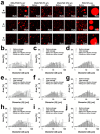Rheology, Microstructure, and Storage Stability of Emulsion-Filled Gels Stabilized Solely by Maize Starch Modified with Octenyl Succinylation and Pregelatinization
- PMID: 33921331
- PMCID: PMC8069085
- DOI: 10.3390/foods10040837
Rheology, Microstructure, and Storage Stability of Emulsion-Filled Gels Stabilized Solely by Maize Starch Modified with Octenyl Succinylation and Pregelatinization
Abstract
We prepared emulsion-filled gels stabilized using octenyl succinic anhydride-modified and pregelatinized maize starch (OSA-PGS). The effect of the oil volume fraction (Φ, 0.05-0.20) and OSA-PGS concentration (3-10% w/v) on the rheological and microstructural properties of the emulsion-filled gels was evaluated. Confocal fluorescence images showed that OSA-PGS stabilized the emulsion, indicated by the formation of a thick layer surrounding the oil droplets, and simultaneously gelled the aqueous phase. All of the emulsions exhibited shear-thinning flow behavior, but only those with 10% w/v OSA-PGS were categorized as Herschel-Bulkley fluids. The rheological behavior of the emulsion-filled gels was significantly affected by both the OSA-PGS concentration and Φ. The mean diameters (D1,0, D3,2, and D4,3) of oil droplets with 10% w/v OSA-PGS were stable during 30 days of storage under ambient conditions, indicating good stability. These results provide a basis for the design of systems with potential applications within the food industry.
Keywords: emulsion-filled gels; microstructure; octenyl succinic anhydride-modified and pregelatinized maize starch; rheological property; storage stability.
Conflict of interest statement
The authors declare no conflict of interest.
Figures



References
-
- Gómez-Luría D., Vernon-Carter E., Alvarez-Ramirez J., Cruz-Sosa F. Insights of the ability of gelatinized fractions from non-chemical modified corn, rice, wheat, and waxy corn starches to stabilize O/W emulsions. Food Hydrocoll. 2019;89:726–734. doi: 10.1016/j.foodhyd.2018.11.045. - DOI
-
- Araiza-Calahorra A., Wang Y., Boesch C., Zhao Y., Sarkar A. Pickering emulsions stabilized by colloidal gel particles complexed or conjugated with biopolymers to enhance bioaccessibility and cellular uptake of curcumin. Curr. Res. Food Sci. 2020;3:178–188. doi: 10.1016/j.crfs.2020.05.001. - DOI - PMC - PubMed
-
- Luo N., Ye A., Wolber F.M., Singh H. Structure of whey protein emulsion gels containing capsaicinoids: Impact on in-mouth breakdown behaviour and sensory perception. Food Hydrocoll. 2019;92:19–29. doi: 10.1016/j.foodhyd.2019.01.019. - DOI
-
- Fontes-Candia C., Ström A., Lopez-Sanchez P., López-Rubio A., Martínez-Sanz M. Rheological and structural characterization of carrageenan emulsion gels. Algal Res. 2020;47:101873. doi: 10.1016/j.algal.2020.101873. - DOI
-
- Jo M., Ban C., Goh K.K., Choi Y.J. Influence of chitosan-coating on the stability and digestion of emulsions stabilized by waxy maize starch crystals. Food Hydrocoll. 2019;94:603–612. doi: 10.1016/j.foodhyd.2019.04.010. - DOI
Grants and funding
LinkOut - more resources
Full Text Sources
Other Literature Sources

